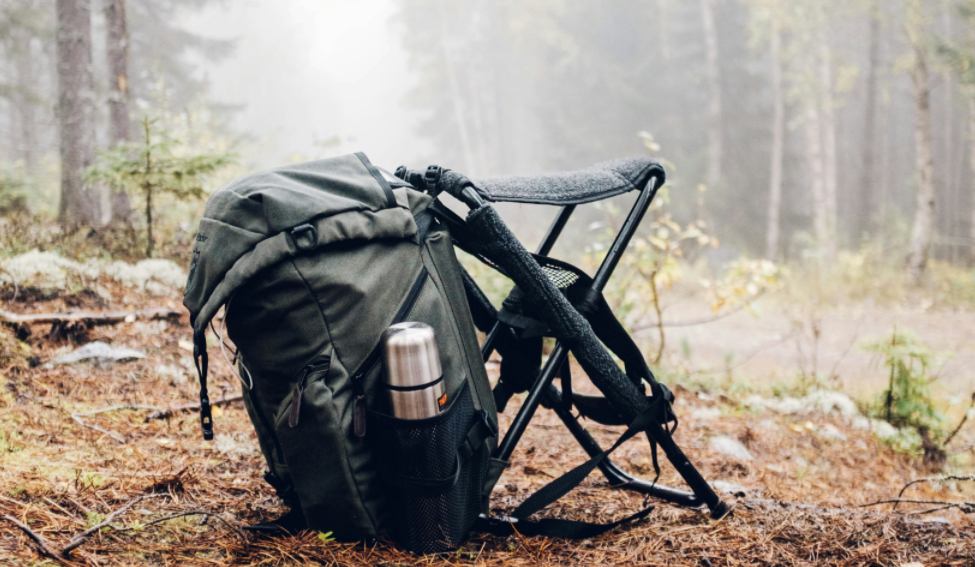Don’t Let a Little Weather Stop Your Spring Thunder
When the skies darken and raindrops start falling, many hunters pack it up and head back to the truck. But seasoned turkey hunters know that rain doesn’t have to ruin your hunt—in fact, under the right conditions, it can improve your odds.
Turkeys don’t go on vacation when it rains. They just adapt. And if you do too, you might just tag that longbeard while others are sipping coffee and waiting for sunshine. Let’s break down how to effectively hunt turkeys in the rain—from gear and setup to behavior and calling strategies.
1. Understand How Rain Affects Turkey Behavior
Turkeys don’t love the rain, but they don’t disappear either. Here’s what typically happens when it rains:
- They head to open ground. Thick woods and heavy cover become uncomfortable and noisy when wet. Turkeys tend to move into open fields, pastures, or logging roads where they can still see predators and shake off the moisture.
- They don’t gobble as much. Rain, especially heavy rain, tends to quiet the woods. Gobblers are more reluctant to sound off, making traditional “run and gun” hunting tougher.
- They slow down. Rain can delay fly-down time from the roost, reduce strutting activity, and generally make turkeys more cautious.
Knowing these behavioral shifts helps you change your strategy accordingly.
2. Dress for the Mess
You can’t hunt well if you’re cold, soaked, and miserable. Wet-weather turkey hunting demands gear that keeps you dry without sacrificing mobility.
Essential Rain Gear:
- Waterproof jacket and pants: Quiet outer layers are crucial—avoid stiff or noisy rain suits.
- Rubber boots or waterproof hunting boots: Especially if you’re field hunting or crossing creeks.
- Gloves and hat: Keep hands warm and dry—especially if you’re using a slate or glass call that might get slick.
- Face mask or camo paint: Rain or shine, concealment still matters.
Pro Tip: Keep a large zip-lock or dry bag for calls, licenses, phones, and extra gloves.
3. Adjust Your Setup: Think Fields and Edges
During rain, gobblers often leave the timber and head to open areas where they can avoid dripping branches and maintain good visibility. That means your usual wooded ambush spot may not cut it.
Best places to set up in the rain:
- Field edges or pasture corners
- Open ridgelines
- Gas or logging lines
- Farm roads or powerline cuts
Bring a ground blind or use a natural blind along field edges—especially helpful if it’s pouring and you need extended shelter.
4. Call Smart (and Loud)
Calling is a little different in the rain. Rain muffles sound, and turkeys aren’t likely to be overly vocal anyway, so you need to project your call farther and use waterproof materials.
Tips for calling in wet conditions:
- Use a diaphragm call—it’s mouth-based and works regardless of the weather.
- Slate calls struggle in the rain. If you want to use one, carry a waterproof striker or treated surface.
- Box calls work well but keep them dry; bring a gallon bag or waterproof box.
- Call less frequently, but make your calls clear and deliberate. Sometimes less is more when the woods are quiet.
5. Be Patient and Stay Put
In dry weather, “running and gunning” can be a productive strategy. But in the rain, still hunting from a blind or staying at a solid field edge increases your chances. Turkeys may not respond to calls with enthusiasm, but they’re still moving.
Rainy-day birds often come in silent—no gobble, no fan, just a red head bobbing toward your decoy.
Stay put longer than you normally would. If you’ve found fresh tracks, feathers, or dusting spots before the rain, those are still prime areas worth waiting on.
6. Bring Decoys Into Play
Visuals become more important when gobbling activity drops. A well-placed decoy—especially in open terrain—can help draw birds that otherwise wouldn’t commit to just sound.
Rain Day Decoy Setup:
- One or two hen decoys is enough (sometimes paired with a jake for added aggression).
- Avoid using a full-strut tom decoy unless you’re in a highly competitive area.
- Keep your decoys wiped off—they can pool rain and look unnatural.
7. Know When to Stay Home
Light to moderate rain? Game on. But if you’re looking at severe thunderstorms, high winds, or lightning, it’s better to wait it out or hunt another day. Turkey hunting isn’t worth putting yourself at serious risk.
Final Thoughts: Rainy Days Can Bring Big Rewards
Turkey hunting in the rain takes grit, patience, and a willingness to get a little muddy—but it also gives you a chance to have the woods (and fields) to yourself. If you play the weather right, adapt your setup, and hunt smart, you just might bag a gobbler while everyone else is still watching the forecast.
So next time those clouds roll in, don’t hang it up—grab your gear, scout those fields, and stay sharp. Because rainy day gobblers? They’re still out there… strutting quietly in the mist, just waiting for you.


